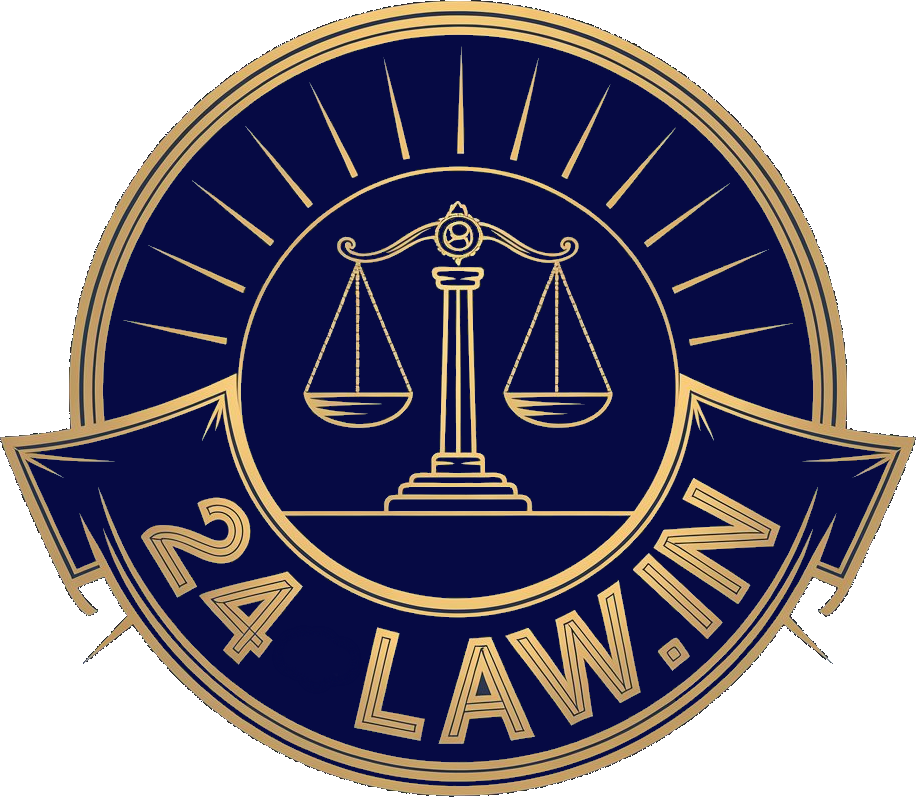“Directions in Paragraphs 25 and 26 Are Deleted”: Supreme Court Recalls Order Removing Allahabad HC Judge From Criminal Jurisdiction After CJI’s Request
- Post By 24law
- August 10, 2025

Kiran Raj
The Supreme Court Division Bench of Justice J.B. Pardiwala and Justice R. Mahadevan has ordered the deletion of paragraphs 25 and 26 from its earlier judgment dated August 4, 2025, which had directed specific administrative consequences for a High Court judge. While acknowledging concerns regarding prior judicial conduct, the Bench clarified that its intent was not to embarrass or cast aspersions on the judge in question. The Court acted upon a written request from the Chief Justice of India and directed the Registry to amend its earlier order accordingly.
This matter originated from a Special Leave Petition (Criminal) No. 11445 of 2025 filed by M/s. Shikhar Chemicals against the State of Uttar Pradesh and another respondent. The petition challenged an order of the High Court of Allahabad that had dismissed the petitioner’s application for quashing criminal proceedings under Criminal Miscellaneous Application No. 2507 of 2024.
By an order dated August 4, 2025, the Supreme Court had partly allowed the SLP, set aside the High Court’s decision, and remanded the matter for fresh consideration. The Apex Court found reason to direct the High Court to rehear the matter on its merits in accordance with two prior decisions of the Supreme Court, which were not specified in detail in the order excerpt.
In paragraphs 22 through 24 of the August 4 judgment, the Court instructed the High Court to assign the matter to a different judge and withdraw the case from the judge who had passed the impugned order. Furthermore, in paragraphs 25 and 26, the Court directed that the concerned judge be seated with a senior judge in a Division Bench and not be assigned any criminal determination until his retirement. These directions were grounded in paragraph 27 of the same order, which stated: “We have been constrained to issue directions as contained in Paras 22, 23, 24, 25 and 26 respectively, referred to above, keeping in mind that the impugned order is not the only erroneous order of the concerned Judge that we have looked into for the first time. Many such erroneous orders have been looked into by us over a period of time.”
Subsequently, an undated letter was received from the Hon’ble Chief Justice of India, urging the reconsideration of the directions contained in paragraphs 25 and 26. Responding to this request, the Supreme Court re-notified the matter to deliberate exclusively on this issue.
The Bench commenced its revised order by acknowledging the letter from the Chief Justice of India and clarified that it had no intention to cause embarrassment or imply misconduct: “At the outset, we must clarify that our intention was not to cause embarrassment or cast aspersions on the concerned Judge. We would not even think of doing so.”
Nonetheless, the Court emphasized the broader institutional concern that had necessitated the original directions: “However, when matters cross the threshold and the dignity of the institution is imperiled, it becomes the constitutional responsibility of this Court to intervene, even when acting under its appellate jurisdiction under Article 136 of the Constitution.”
In support of the reasoning provided in the earlier judgment, the Court reiterated the content of paragraph 27 to underscore the pattern of concern: “At the cost of repetition, we reproduce para 27 as under: ‘We have been constrained to issue directions as contained in Paras 22, 23, 24, 25 and 26 respectively, referred to above, keeping in mind that the impugned order is not the only erroneous order of the concerned Judge that we have looked into for the first time. Many such erroneous orders have been looked into by us over a period of time.’”
The Bench reaffirmed its commitment to maintaining judicial integrity without compromising the administrative prerogatives of High Courts: “The High Courts are not separate islands that can be disassociated from this Institution and we reiterate that whatever was said in our order was to ensure that the dignity and authority of the judiciary as a whole is maintained high in the minds of the people of this country.”
Addressing the severity of judicial errors, the Court noted: “It is not just a matter of error or mistake committed by the Judge concerned in appreciating the legal points or facts. We were concerned about the appropriate direction to be issued in the interest of justice and with a view to protecting the honour and dignity of the institution.”
The Court further discussed the broader impact of judicial errors on the public's perception of justice: “The litigants in this country approach different courts of law to seek justice. For 90% of the litigants in this country, the High Court is the final court of justice. Only the remaining 10% can afford to approach the Supreme Court.”
The Bench acknowledged the administrative supremacy of the Chief Justice of a High Court but justified limited intervention when institutional concerns arise: “We fully acknowledge that the Chief Justice of a High Court is the master of the roster. But, as observed above, our directions are absolutely not interfering with the administrative power of the Chief Justice of the High Court.”
Citing a precedent, the Court referenced a judgment in Rikhab Birani & Anr. vs. State of Uttar Pradesh & Anr. (2025 INSC 512), stating: “We are also constrained to impose costs of Rs. 50,000/- (Rupees Fifty Thousand Only) on the State of Uttar Pradesh as in spite of repeated judgments/orders of this Court, we are being flooded with cases of civil wrongs being made the subject matter of criminal proceedings by filing chargesheets, etc.”
Lastly, the Court made a strong call for judicial responsibility: “The endeavour of the High Courts should always be to uphold the rule of law and maintain institutional credibility. If the Rule of Law is not maintained or protected within the court itself, then that would be the end of the entire justice delivery system in the country.”
In conclusion, the Supreme Court directed that paragraphs 25 and 26 of its earlier order dated August 4, 2025, be formally deleted. The Bench stated: “In any view of the matter, since a request has been made in writing by Hon’ble the Chief Justice of India, and in due deference to the same, we hereby delete paras 25 and 26 respectively from our order dated 4th August, 2025. The order be corrected accordingly.”
However, while removing those paragraphs, the Bench left room for administrative discretion by the High Court: “While we are deleting paras 25 and 26 respectively from our order dated 04th August, 2025, we leave it to the Chief Justice of the Allahabad High Court to look into the matter.”
The Court made it clear that its previous directions were not an attempt to interfere with High Court administration: “Our directions are absolutely not interfering with the administrative power of the Chief Justice of the High Court.”
With these remarks, the Court disposed of the Special Leave Petition: “With the aforesaid, we dispose of the Special Leave Petition.”
Finally, the Registry was instructed to forward the corrected order: “The Registry is directed to forward one copy of this order at the earliest to Hon’ble the Chief Justice of the Allahabad High Court.”
Case Title: M/s. Shikhar Chemicals v. The State of Uttar Pradesh & Anr.
Neutral Citation: 2025 INSC 945
Case Number: Special Leave Petition (Crl.) No.11445/2025
Bench: Justice J.B. Pardiwala, Justice R. Mahadevan




